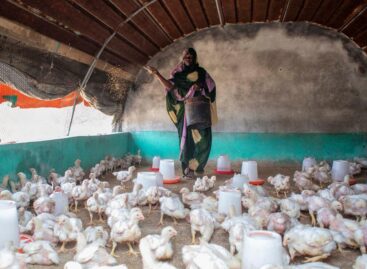The international crop price index has been in decline for a year
With the March result, the index of international food prices has been falling for 12 months, thanks to the low world market prices of cereals and vegetable oils, the Food and Agriculture Organization of the United Nations (FAO) announced.

(Photo: Pixabay)
The FAO food price index, which tracks the monthly price changes of the most important crops in international trade, closed 2.1% lower in March compared to the previous month, and its level of 126.9 points is 20.5% below the peak of March last year. Abundant supply, moderate demand and the expansion of the Black Sea grain initiative all contributed to the further fall.
The cereal price index has fallen by 5.6% since February
The world market price of wheat fell by 7.1% mainly due to the strong Australian output, favorable production prospects in the European Union, Russian supply and Ukrainian grain exports from the Black Sea. The price of corn fell by 4.6% due to expectations about the Brazilian harvest, while the price of rice decreased by 3.2% in the global market amid the ongoing or imminent harvest in the most important producing countries (India, Vietnam, Thailand).
Vegetable oils have also become cheaper
The price index of vegetable oils closed on average 3% lower than in February and 47.7% lower than at this time last year, after the quotations of soybean, rapeseed and sunflower oil also fell due to abundant stocks and depressed demand. This was almost entirely offset by higher palm oil prices due to low output due to floods in Southeast Asia and periodic export restrictions in Indonesia.
“While prices have decreased globally, they are still very high and rising in national markets, creating additional food security challenges. This is especially true in the case of net food importing countries, where often the weakening of their currency against the dollar or euro or the increase in public debt only worsens the situation,” emphasized Maximo Torero, FAO’s chief economist.
The price index of dairy products decreased by 0.8% in March.
However, butter rose in price as demand strengthened, while cheese became cheaper on global markets due to lower interest from leading Asian importers and higher inventories from major exporters. In contrast, the FAO sugar price index rose by 1.5% in one month, reaching the highest level since October 2016. The trend reflects concerns about the production outlook for India, Thailand and China, while the fall was curbed by an abundance of Brazilian sugarcane ahead of harvest and a drop in crude oil prices, which also led to a reduction in demand for bioethanol.
Meat products rose in price by a mere 0.5% on average
Beef bids rose after the US market priced in a possible supply shortage, while higher pork prices mainly reflected an increase in demand in Europe ahead of the holidays. Despite the emergence of bird flu in many major exporting countries, the price of poultry meat has been falling continuously for nine months due to ailing import demand.
Fresh information on the grain market
In the latest Grain Stocks and Demand Quick Report, FAO experts raised their estimate for this year’s wheat production to 786 million tons, which is 1.3% less than last year’s near-record amount. Huge areas have been planted in Asia, but in North Africa and Southern Europe, the dry weather is making its impact felt. In the Southern Hemisphere, the area sown with corn and production prospects in Brazil may reach unprecedented heights, which is also helped by sustained demand. A good harvest is also expected in South Africa, on the other hand, the prolonged drought in Argentina was also unfavorable for corn.
For 2022, the FAO also increased the expected yield of cereals to 2,777 million tons, which is 1.2% less compared to 2021
Global rice output could reach 516 million tons in the 2022-23 season, just 1.6% below the record harvest of the previous period. Compared to a year earlier, global grain trade this season may shrink by 2.7% to 469 million tons. The decrease is mainly due to the expected smaller trade of grain products, while the global wheat trade may even expand. The international market for rice in 2023 is estimated to be 5.2% below the record level of 2022.
Related news
FAO: International food prices have been declining since September
🎧 Hallgasd a cikket: Lejátszás Szünet Folytatás Leállítás Nyelv: Auto…
Read more >Coca-Cola waiting to innovate in dairy
🎧 Hallgasd a cikket: Lejátszás Szünet Folytatás Leállítás Nyelv: Auto…
Read more >FAO-Ministry of Agriculture Scholarship Program Continues
🎧 Hallgasd a cikket: Lejátszás Szünet Folytatás Leállítás Nyelv: Auto…
Read more >Related news
Superbrands celebrated again in 2025
🎧 Hallgasd a cikket: Lejátszás Szünet Folytatás Leállítás Nyelv: Auto…
Read more >László Pekó: “Coop isn’t just a network, it is a way of life – and has been for 30 years”
🎧 Hallgasd a cikket: Lejátszás Szünet Folytatás Leállítás Nyelv: Auto…
Read more >(HU) Karácsonyi tv-reklámok 2025 – indul a közönségdíj szavazás
🎧 Hallgasd a cikket: Lejátszás Szünet Folytatás Leállítás Nyelv: Auto…
Read more >






